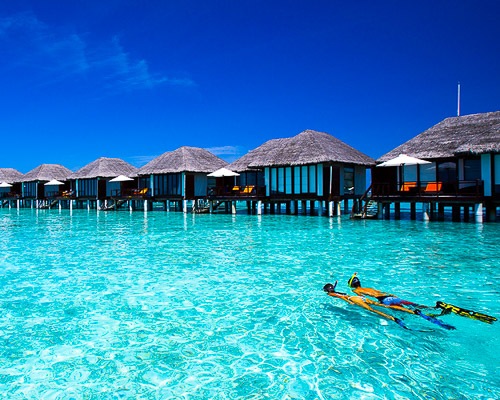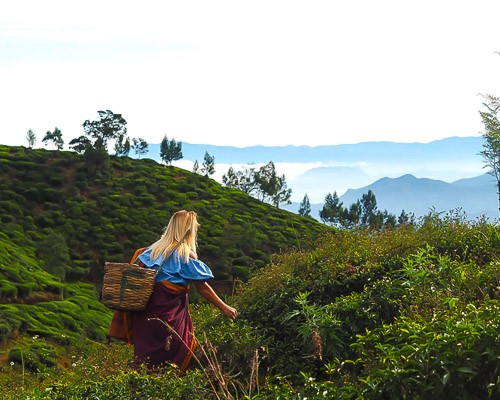SRI LANKA
Sri Lanka Luxury Private Tour
Pinnawela
Pinnawela elephant orphanage is situated northwest of Kegalla, between the present capital Colombo and the ancient royal residence Kandy in the hills of central Sri Lanka. It was established 1975 by the Sri Lanka Wildlife department. This 24 acres large elephant orphanage is also a breeding place for elephants, twenty elephants were born since 1984.
Sigiriya
Sigiriya may have been inhabited since prehistoric times. There is clear evidence that the many rock shelters and caves in the vicinity were occupied by Buddhist monks as early as the 3rd century BCE. In 477 CE, Kashyapa, the king’s son by a non-royal consort, seized the throne from King Dhatusena, following a coup assisted by Migara, the king’s nephew and army commander. The rightful heir, Moggallana, fearing for his life fled to South India. Fearing an attack from Moggallana, Kashyapa moved the capital and his residence from the traditional capital of Anuradhapura to the more secure Sigiriya.
Dambulla
The area is thought to be inhabited from as early as the 7th to 3rd century BC. Statues and paintings in these caves date back to the 1st century BC. The paintings and statues were repaired and repainted in the 11th, 12th, and 18th century AD. The caves in the city provided refuge to King Valagamba (also called Vattagamini Abhaya) in his 14 year long exile from the Anuradhapura kingdom. Buddhist monks meditating in the caves of Dambulla at that time provided the exiled king protection from his enemies. When King Valagamba returned to the throne at Anuradhapura kingdom in the 1st century BC, he had a magnificent rock temple built at Dambulla in gratitude to the monks in Dambulla.
Polonnaruwa
In the afternoon we will show you the UNESCO World Heritage list, the capital from the 11th to the 13th century and seat of the king. Drive past numerous rice fields in the northern central province to Polonnaruwa. Featured here is the statue of the city founder Parakrama Bahu I, Tivanka with many impressive frescoes, the “holy square” with the dome Thuparama and the reliquary Vatadage, the Statue Home Lankathilake, the White Dagoba Kiri Vehara and the rock temples Gal Vihare. Admire the statues of Buddha carved out of rock – two seated in a meditating posture, a standing figure with arms crossed and a 14-meter long reclining Buddha at the entrance to nirvana. A true masterpiece of the former stonemasons.
Kandy
The impressive city of Kandy is located in the central mountains of Sri Lanka and has about 110,000 inhabitants. In Kandy you will find alot of gemstones craftsmen. The landmark of the city is the famous Temple of the Tooth (Sri Dalada Maligawa), which supposedly is the upper left canine tooth of the Buddha. The last highlight of the day is a cultural dance show of Kandyan dancers next to the temple.
Nuwara Eliya
The ‘Little England’ of Sri Lanka, is set against beautiful backdrops of Mountains, Valleys, Waterfalls and Tea Plantations. It is supposed to be one of the coldest places on the island, but is really just like an England springs day although the temperature does drop at night. All around Nuwara Eliya you will see evidence of the British influence. Houses are like country cottages or Queen Ann style mansions. To know more about Ceylon Tea, you must visit a Sri Lankan Tea Factory or Tea Processing Center. There are hundreds of Tea factories in the Central Highlands, the Uva region and in the Southern parts of Sri Lanka. Some of these factories are situated in breathtakingly beautiful landscape, surrounded by serene green gardens of tea. Visitors to any of these Centers are normally treated with typical Sri Lankan courtesy and you can also participate in the tea picking process.
Yala
Yala combines a strict nature reserve with a national park. Divided into 5 blocks, the park has a protected area of nearly 130,000 hectares of land consisting of light forests, scrubs, grasslands, tanks and lagoons. Two blocks are currently opened to the public. Situated in Sri Lanka’s south-east hugging the panoramic Indian Ocean, Yala was designated a wildlife sanctuary in 1900 and was designated a national park in 1938. Ironically, the park was initially used as a hunting ground for the elite under British rule. Yala is home to 44 varieties of mammal and 215 bird species. Among its more famous residents are the world’s biggest concentration of leopards, majestic elephants, sloth bears, sambars, jackals, spotted dear, peacocks, and crocodiles.
Galle
Galle is a major city in Sri Lanka, situated on the southwestern tip of Sri Lanka, 119 km from Colombo. Galle is the administrative capital of the Southern Province and is the district capital of Galle
District. Galle is the fourth largest city in Sri Lanka after the capital Colombo, Kandy and Jaffna. Galle was known as Gimhathiththa before the arrival of the Portuguese in the 16th century, when it was the main port on the island. Galle reached the height of its development in the 18th century, during the Dutch colonial period. Galle is the best example of a fortified city built by the Portuguese in South and Southeast Asia, showing the interaction between Portuguese architectural styles and native traditions. Important natural geographical features in Galle include Rumassala in Unawatuna, a large moundlike hill, which forms the eastern protective barrier to the Galle harbour. Local tradition associates this hill with some events of Ramayana, one of the great Hindu epics.
Colombo
Colombo is the largest city of Sri Lanka, with a population of 4,575,000. It is located on the west coast of the island and adjacent to Sri Jayewardenepura Kotte which is the official capital of Sri Lanka. Colombo is often referred to as the capital since Sri Jayewardenepura Kotte is a satellite city of Colombo. Colombo is a busy and vibrant place with a mixture of modern life and colonial buildings and ruins it was the political capital of Sri Lanka, before Sri Jayewardenepura Kotte. It is worth a short visit on the way to the airport which is next to Negombo.
[/tg_accordion]
Maldives
We recommend ending you tour in the Maldives as it is only a short 1h30 flight away, please CLICK HERE to visit our Maldives page or contact us to get more information.
Visa
- Travelers making short visit to Sri Lanka require to obtain an Electronic Travel Authorization (ETA) on www.eta.gov.lk
- The approval will usually be receive within 2 working days.
- Transit visa up to 48 hours currently issued free of charge
Currency
The Sri Lankan Rupee is the currency of Sri Lanka. The currency code for Rupees is LKR, and the currency symbol is ₨.
Weather
We recommend going between December to April

















